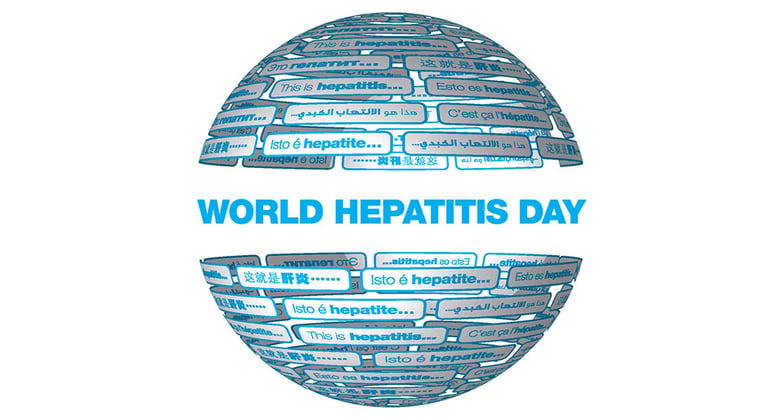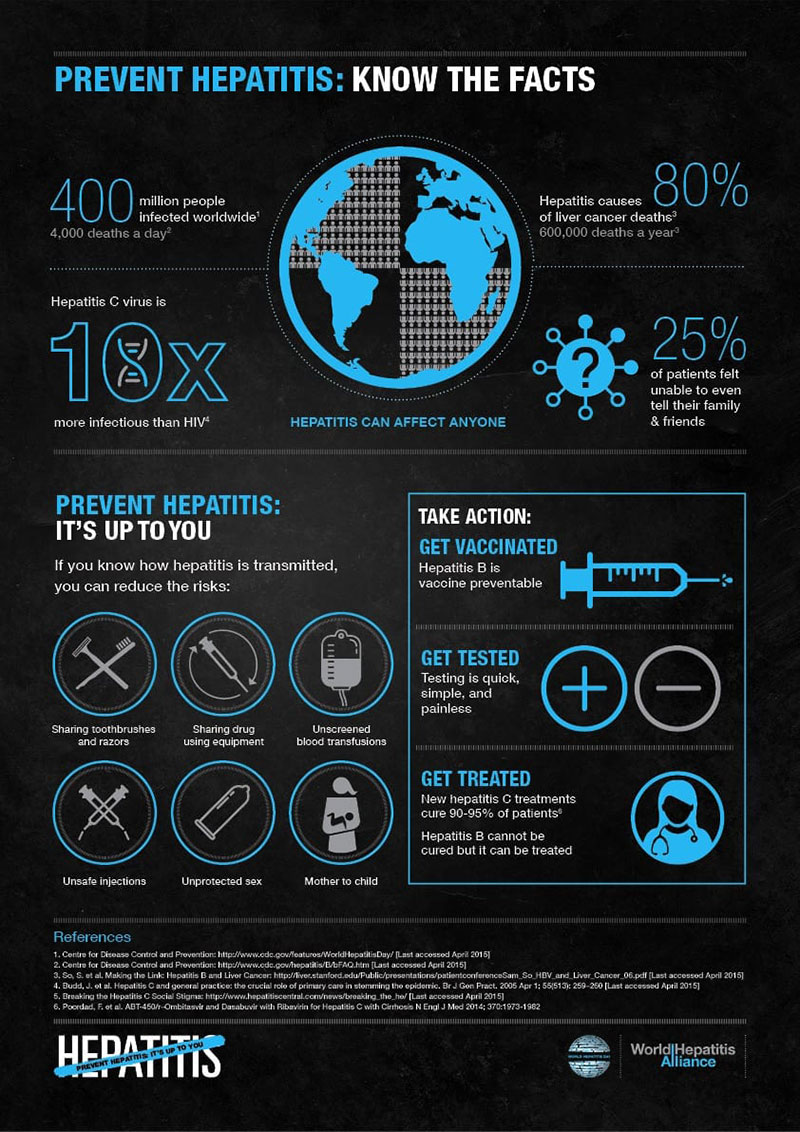
WORLD HEPATITIS DAY: 4,000 people die daily from hepatitis, but some forms of the disease can be prevented. Infographic: World Hepatitis Alliance
Today is World Hepatitis Day 2015, the annual day promoted by the World Hepatitis Alliance and the World Health Organization to raise awareness about the different types of the disease.
The UMHS Endeavour looks at what hepatitis is, the five different types, and what the public and students at American and Caribbean medical schools can do to prevent the disease. We will also look at the "4,000 Voices" social media campaign and what you can do today to help on Twitter.
What Is Hepatitis?
The World Hepatitis Day website says viral hepatitis is an inflammation of the liver.
World Hepatitis Day says 400 million worldwide are infected with hepatitis, and 4,000 people die from hepatitis on a daily basis around the globe.
There are five different hepatitis viruses: A, B, C, D and E. Following are facts about each type from the World Hepatitis Day website.
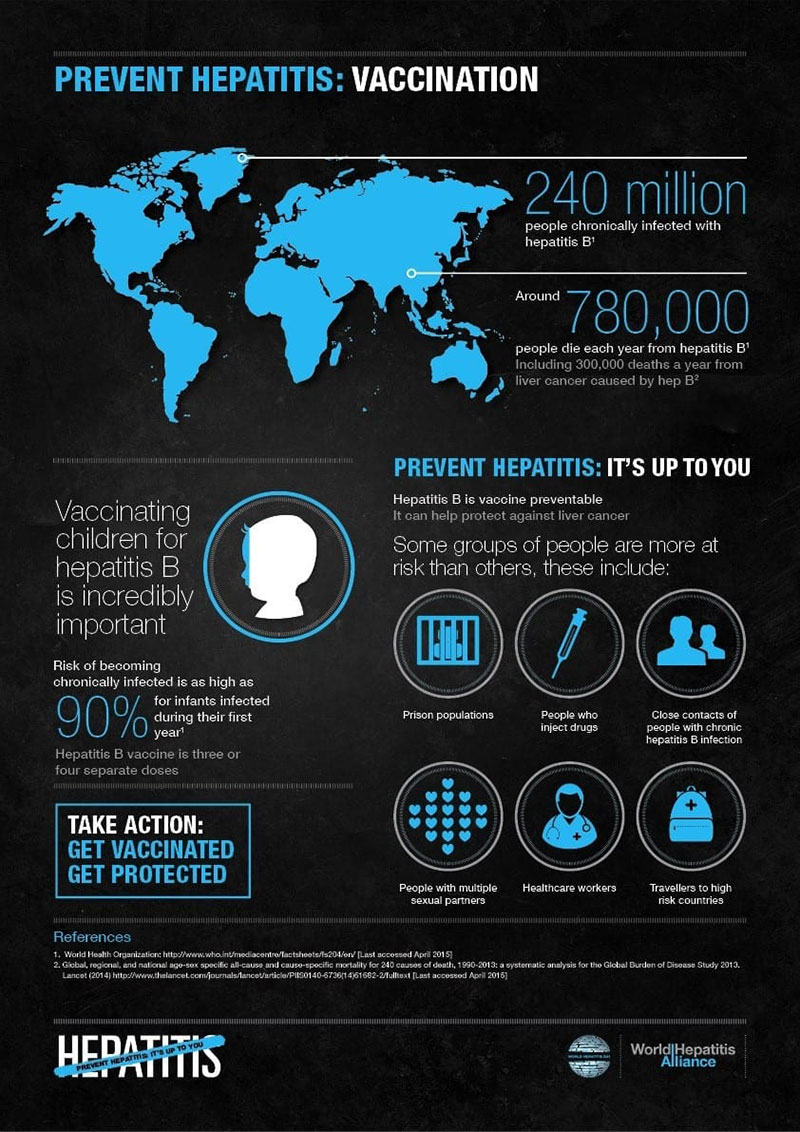
VACCINATION SAVES LIVES: Vaccines are available to prevent Hepatitis A and B. Infographic: World Hepatitis Alliance
Hepatitis A
Transmission: Hepatitis A is spread mainly through eating food or drinking water that has been contaminated by the feces of an infected person. It can also be spread by eating raw shellfish that have come from water contaminated by sewage.
Prevention: There is a vaccination for hepatitis A. Treatment within a few weeks of exposure to the virus can also bring short term immunity. You can reduce the risk of exposure by practicing good hygiene and sanitation, and avoiding drinking water that has come from a potentially unsafe source.
Treatment: As hepatitis A only causes acute hepatitis, the body is often able to clear the infection itself within a few weeks. However, hepatitis A infections can sometimes cause further complications.
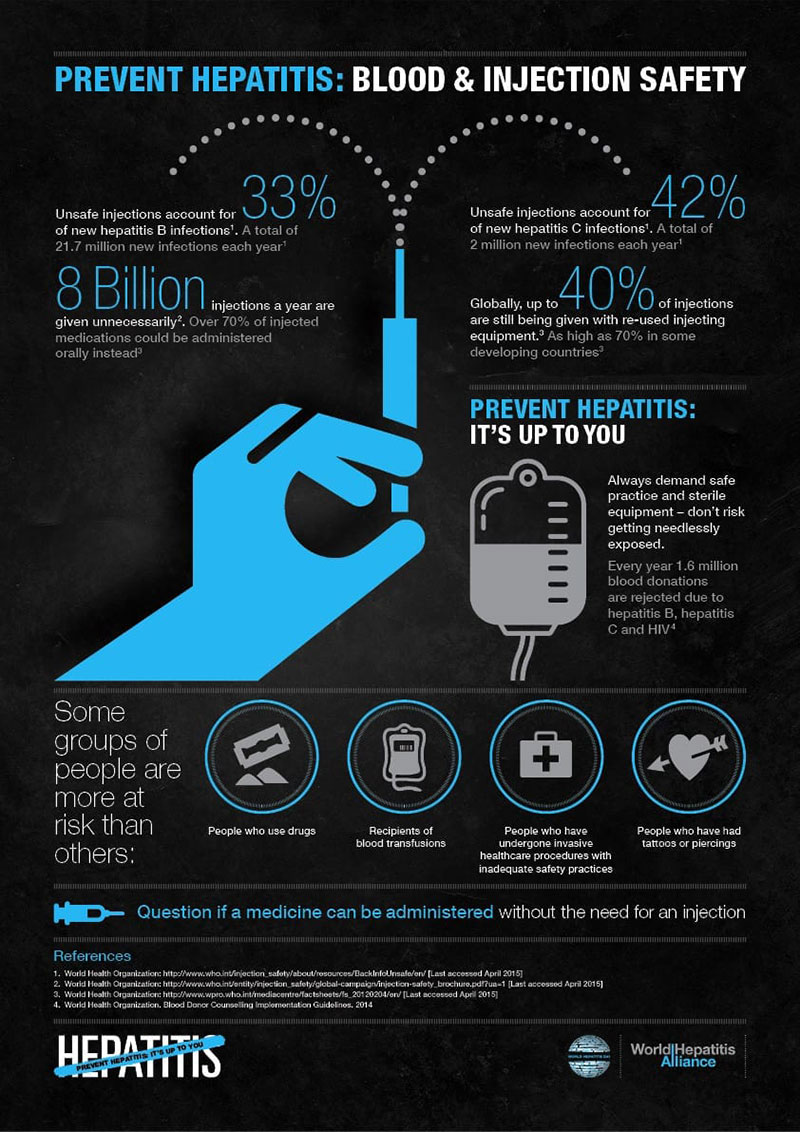
BLOOD & INJECTION SAFETY: Follow these guidelines to prevent hepatitis. Infographic: World Hepatitis Alliance
Hepatitis B
Transmission: Hepatitis B is transmitted through contact with the blood or other body fluids (i.e. saliva, semen and vaginal fluid) of an infected person. It can be passed on from mother to child during childbirth.
Prevention: There is a vaccination that can prevent infection. If you have not been vaccinated, to reduce chances of exposure it is best to use condoms, and to avoid sharing needles or items such as toothbrushes, razors or nail scissors with an infected person. It is also wise to avoid getting tattoos or body piercings from unlicensed facilities.
Treatment: Drugs such as alpha interferon and peginterferon and a variety of antiviral drugs are available, helping slow the replication of the virus and occasionally result in its clearance. Children born to mothers infected with hepatitis B should also be vaccinated within 12 hours of birth, as this can prevent an infection that will most likely progress to chronic hepatitis B.
Hepatitis C
Transmission: Hepatitis C is mainly spread through blood-to-blood contact. In rare cases it can be transmitted through certain sexual practices and during childbirth.
Prevention: There is no vaccination for hepatitis C. It is therefore necessary to reduce risk of exposure, by avoiding sharing needles and other items such as toothbrushes, razors or nail scissors with an infected person. It is also wise to avoid getting tattoos or body piercings from unlicensed facilities.
Treatment: Treatment for chronic hepatitis C aims to eradicate the virus. It often involves a combination of pegylated interferon and ribavirin, and there is increasing use of potent direct acting antiviral drugs, with and without interferon. People with different genotypes respond differently to treatment, some more successfully than others.
Hepatitis D
Transmission: Hepatitis D is spread through contact with infected blood.
Prevention: Hepatitis D is only found in people who are already infected with the hepatitis B virus. People not already infected with hepatitis B, should get the hepatitis B vaccination. To reduce exposure, avoid sharing needles and other items such as toothbrushes, razors or nail scissors with an infected person. It is also wise to avoid getting tattoos or body piercings from unlicensed facilities.
Treatment: Conditions may improve with administration of a-interferon, however no effective antiviral therapy is currently available for hepatitis D.
Hepatitis E
Transmission: Hepatitis E is mainly transmitted through eating food or drinking water that has been contaminated by the feces of an infected person. It can also be spread by eating raw shellfish that have come from water contaminated by sewage.
Prevention: Currently there is a vaccine to prevent hepatitis E, but it is not widely available. You can reduce the risk of exposure by practicing good hygiene and sanitation, and avoiding drinking water that has come from a potentially unsafe source.
Treatment: There is no treatment for hepatitis E. However, it is usually self-limiting.
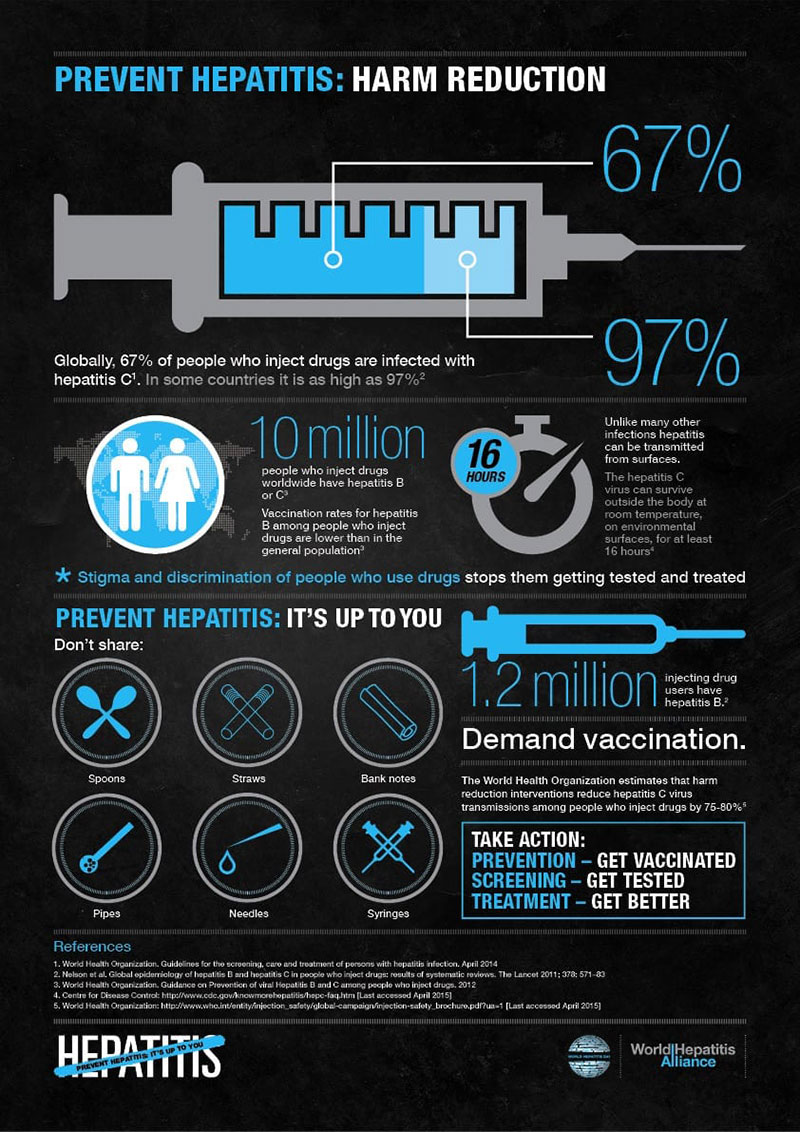
HARM REDUCTION & HEPATITIS: Don't share needles, straws, syringes or bank notes to avoid hepatitis. Infographic: World Hepatitis Alliance
#4,000 Voices: How to Help on Twitter Today
The World Health Organization asks 4,000 people “to stand up and be counted in the quest to raise awareness of viral hepatitis. You can provide a voice for the 4,000 lives that will be lost on World Hepatitis Day this year.”
To help out, tweet using the hashtag #4000voices. You may also upload an image to contribute your Twitter avatar or photo for the World Hepatitis Day collage.
Help Prevent Hepatitis
Vaccines exist for Hepatitis A and B. Health-care workers, people with multiple sexual partners and travelers to high-risk countries should ask their doctors about vaccination. Please see the infographics in this blog post for prevention of various types of hepatitis.
(Top image) Courtesy of World Hepatitis Alliance
About UMHS:
Built in the tradition of the best US universities, the University of Medicine and Health Sciencesfocuses on individual student attention, maintaining small class sizes and recruiting high-quality faculty. We call this unique approach, “personalized medical education,” and it’s what has led to our unprecedented 96% student retention rate, and outstanding residency placements across the US and Canada. UMHS is challenging everything you thought you knew about Caribbean medical schools.

Scott is Director of Digital Content & Alumni Communications Liaison at UMHS and editor of the UMHS Endeavour blog. When he's not writing about UMHS students, faculty, events, public health, alumni and UMHS research, he writes and edits Broadway theater reviews for a website he publishes in New York City, StageZine.com.













